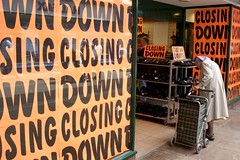In the UK, Google is set to launch a new financial services division with a new credit business the first product to market. As Adam Clark Estes reports, the initial offering will provide businesses with a small line of credit linked specifically to Google’s AdWords program.
A number of items within the announcement are worthy of attention:
- It’s a new product within a new division of Google
- The plan is to expand to countries beyond the UK in the “next few weeks”
- Credit cards will be issued with very competitive rates
Why This Is Important
- Financial services is a fresh field ready for disruption: Disruption in the financial services sector has been a long time coming. The sweeping tide of digital has washed through most sectors but has been held back from regulated sectors like financial services, healthcare and pharmaceuticals. Innovators are seeking a way into these lucrative markets
- Google understands speed to market: Many industries rollout new offerings over extended time frames. It can take years for innovations in one national market to reach another. Google’s intention clearly intends to move very quickly to cement a foothold
- The loan book is the thin edge of the wedge: As I suggested at a recent personal lending conference, disruptive competition is likely to come from outside the financial services industry. Cash Converters in the UK last year saw 154% growth in their personal loan book; in Australia they experienced a not insubstantial 28% growth. This is not about bit players – it’s about trends – and there is a wave of change coming. Google plan to be surfing this wave
The Bottom Line: Connected Consumers Shift to Where their Sense of Trust Takes Them
Despite advertising and branding blitzes over the previous 24 months, most financial services companies are viewed with suspicion by many of their customers. Long term lock-in has allowed FS companies to claw back GFC losses and to grow. This move by Google (and the accompanying announcement by Amazon) will capture the imagination of Connected Consumers – the tech savvy early adopters of a disaffected consumer world. Google has been building trust with Connected Consumers for years, turning every search result, every click and every app login into a brand experience. This may be the first step in what could truly be a transformative monetization strategy.
Your POV
Would you take a loan from Google for AdWords? What about cash? Where do you see this leading? Add your comments or send us an email.
Please let us know if you need help with your digital strategy efforts. Here’s how we can assist:
- Assessing social business/digital marketing readiness
- Considering new digital community strategy
- Developing your social business/digital marketing strategy
- Designing a data to decisions strategy
- Create a new vision of the future of work
- Deliver a new customer experience and engagement strategy
- Crafting a new matrix commerce strategy

